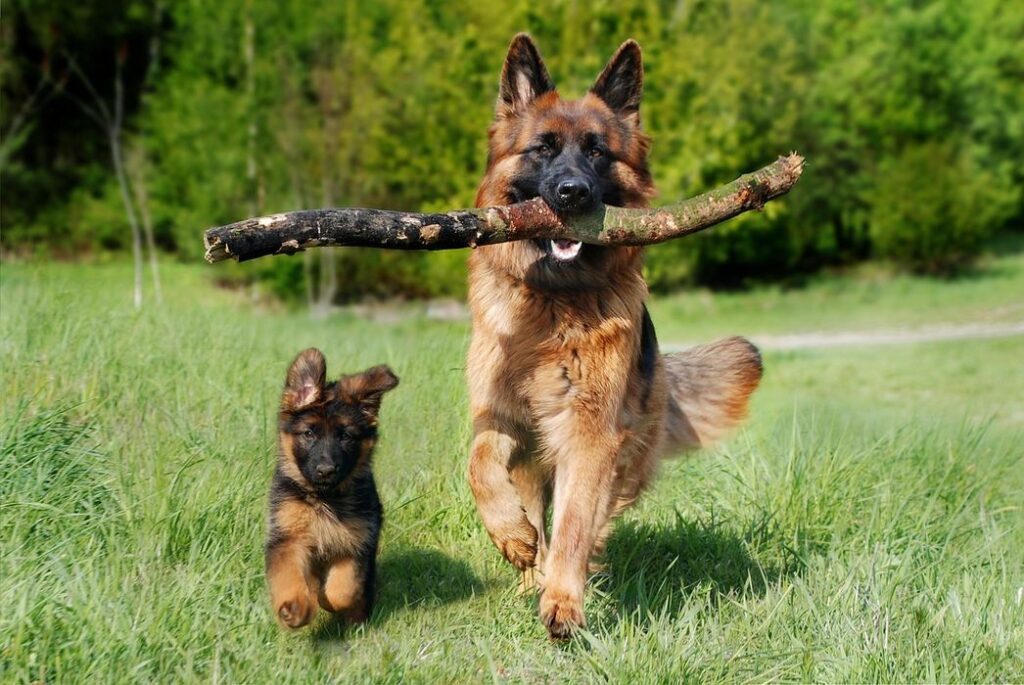How to Train a Stubborn Dog: Training a stubborn dog can feel like a tough job sometimes. It’s like trying to solve a puzzle where the pieces don’t seem to fit. But here’s the thing: the key to success is really about getting to know how dogs think and being patient with them.
When we say a dog is “stubborn,” it might just be that we’re not speaking their language yet. Maybe they don’t understand what we’re asking, or they have their own reasons for acting a certain way, like how they were raised or something unique about their breed.
So, as we start this guide, we’re going to look into what might make a dog act stubborn and how we can be better friends with them. We’ll share some tips on how to talk to your dog in a way they get it, how to build trust, and how to make training fun and rewarding for both of you. Stick with us, and you’ll see how understanding and patience can turn training struggles into a fun journey together.
Here are ways to How to Train a Stubborn Dog
Understanding Stubborn Dog Behavior
Have you ever wondered why your dog doesn’t listen, even when you’re sure they know what you’re asking? It’s easy to think they’re just being stubborn, but there’s often more to the story.
First, let’s get something straight: calling a dog stubborn might not be fair. Dogs do things for reasons that make sense to them, even if not to us. Maybe they’re not sure what you’re asking, or perhaps there’s something way more exciting happening from their point of view.
Some dogs have a strong will because of the job they were bred to do, like hounds who follow scents or herding dogs who chase and gather. Other times, a dog might have had a tough start in life, making them more cautious about following directions.
Understanding your dog means stepping into their paws. What’s going on in their head? Are they bored, confused, or maybe just super interested in that squirrel instead of your command to “stay”? Getting this insight is like finding a key that unlocks their behavior.
Read More: How did You Know Your Doesn’t like You
Building a Strong Foundation
Now, how do we go from understanding our dog to actually getting them to listen? It all starts with a solid foundation, and at the heart of it is communication and trust.
Communication Is Key: Imagine visiting a country where you don’t speak the language. You’d be confused, right? That’s how dogs can feel. Teaching commands is like teaching a new language. It’s all about being clear and making sure your dog understands what those words mean. Use gestures, tones, and rewards to help them get it.
Trust and Bonding: This is where the magic happens. When your dog trusts you, they want to listen to you. Building that trust means spending quality time together, not just during training but also play and cuddles. Show them that following your lead is safe and leads to good things, like treats or belly rubs.
A strong foundation isn’t built overnight. It takes patience and consistency. But once you have it, everything in training becomes a lot easier. Think of it as building a bridge between you and your dog, where commands and cues flow smoothly in both directions.

Training Techniques for Stubborn Dogs
Training a dog who seems to have their own strong opinions about how things should be done can be tricky. But with the right techniques, you can guide them gently towards cooperation:
- Positive Reinforcement: This is all about rewarding the behaviors you like to see. It could be treats, a happy voice, or a favorite toy. Think of it like this: if your dog does something good and gets a yummy treat, they’ll want to do it again. It’s about making good behavior worth their while.
- Adapting Training Sessions: Not every dog likes the same kind of training. Some might love long sessions, while others get bored quickly. If your dog seems to lose interest, try making sessions shorter and more fun. Throw in their favorite game or practice in different places to keep things interesting.
- Consistency and Patience: Imagine if someone changed the rules on you all the time. Confusing, right? Dogs feel the same way. Keeping your commands, rewards, and routines consistent helps them understand what’s expected. And patience? It’s golden. Showing your dog that you’re in this together, even when things get a bit rocky, makes all the difference.
Overcoming Common Training Challenges
Even with the best plan, you might hit some bumps along the way. Here’s how to smooth out those common training challenges:
- Dealing with Specific Behaviors: Let’s say your dog pulls on the leash or ignores you when you call. These are common issues, but they’re not unsolvable. For leash pulling, try stopping in your tracks every time the pulling starts. It teaches your dog that pulling won’t get them where they want to go. Ignoring your call? Practice in a quiet place without distractions and gradually increase the difficulty.
- Adjusting Your Approach: Every dog learns differently. Some might respond well to verbal praise, while others are all about the treats. Pay attention to what motivates your dog the most and use that to your advantage. And if something isn’t working, it’s okay to try a new approach. Flexibility in training methods is a strength, not a setback.
Remember, training isn’t just about teaching your dog; it’s also about you learning how to best communicate with your furry friend. Every challenge is an opportunity to strengthen your bond and understanding.
Professional Help and Resources

Sometimes, despite our best efforts, we need a little extra help. And that’s perfectly okay! Here’s how you can find it:
- When to Seek Professional Assistance: If you’re feeling stuck or your dog’s behavior isn’t improving, it might be time to call in a pro. Professional dog trainers and behaviorists have a lot of experience and can offer new strategies and insights. They can spot issues we might miss and provide tailored advice for our unique furry friends.
- Utilizing Training Resources: There are so many great books, websites, and videos out there filled with training tips. Look for ones that emphasize positive reinforcement and are created by reputable trainers. These resources can offer new ideas and remind you that you’re not alone in this journey.
Read More: Why Do Dogs Love Tennis Balls
Community Support and Socialization
Training your dog is not just about commands and behaviors; it’s also about helping them become a well-adjusted member of society:
- Socializing your dog with other dogs and people is crucial. It helps them learn how to behave in different situations and makes them more confident.
- Joining dog training classes or online forums can be incredibly helpful. Not only does this provide socialization opportunities for your dog, but it also connects you with other dog owners. Sharing experiences and advice can be both comforting and enlightening.
Conclusion
Training a dog, especially one that seems a bit more set in their ways, is a journey filled with ups and downs. Remember, every dog can learn; it just might take some a little more time and patience. Celebrate the small victories, keep a sense of humor about the challenges, and always lead with love and understanding. The bond you’re building is worth every effort, and the journey itself can be as rewarding as the destination.
By embracing the strategies we’ve discussed and seeking support when needed, you’re setting the stage for a beautiful, lifelong friendship with your dog. So, keep your spirits up, your treats handy, and enjoy every step of this incredible journey together.

